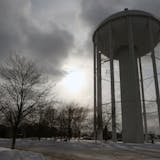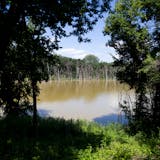It's clear that growing native plants is a good thing. The benefits for humans are many — they feed us, filter our water, replenish our soil and sequester carbon. They are tough and adaptable plants that bring beauty and ease to our lives and gardens. More crucially, wildlife depends upon their flowers, foliage, fruits and seeds for their very survival.
Still, it's surprising how quickly the scene grows murky. What exactly is a native plant?
Native plants are defined as those that occurred naturally in the place where they evolved. Some people will go further to add "unaltered genetically by human activity." (More on that in a bit.)
Then there's that term "wild." Think of the ubiquitous orange ditch lilies, originally from Asia, that escaped the garden gate and now adorn our roadsides. They may have gone wild but they aren't native.
Here in Minnesota, I grow a patch of California poppies out front to remind me of my home state. Many seed packets or catalog descriptions will tell you that California poppy is a native plant — without further explanation. That's the problem with a big country like the United States when we talk about what's native and what isn't. You can't paint things with such a broad brush. Those poppies are native to the Western U.S. but not to here.
A delicate orchid on a stream bank in Tennessee or a scrubby sage on thin, rocky soil in Colorado may be able to exist only in that tiny ecosystem with a set of uber-specific growing conditions. So when you call a plant native, you not only have to ask "native to where?" but also "native to what environment?" What's native to a marsh in Minnetonka may not be native to the woods around Waseca.
'Nativars'
What does all this mean for your front yard? When you look online or visit garden centers you'll see lots of excited marketing about native plants. It pays to educate yourself before you plant.
Nowadays, when native plant shopping, you'll find, along with straight species (no human intervention), lots of named cultivars (sometimes called "nativars) of native plants. Here's the story behind this fast-emerging segment of the horticulture business. To make native plants more appealing to today's consumer, a plant breeder will grow out hundreds of seedlings and select from that group those that show a particular desirable trait, like a bigger or brighter flower, a longer bloom time, sturdier stems or a more compact shape, and then propagate it until they have a plant with those characteristics that's consistent and predictable to sell.


